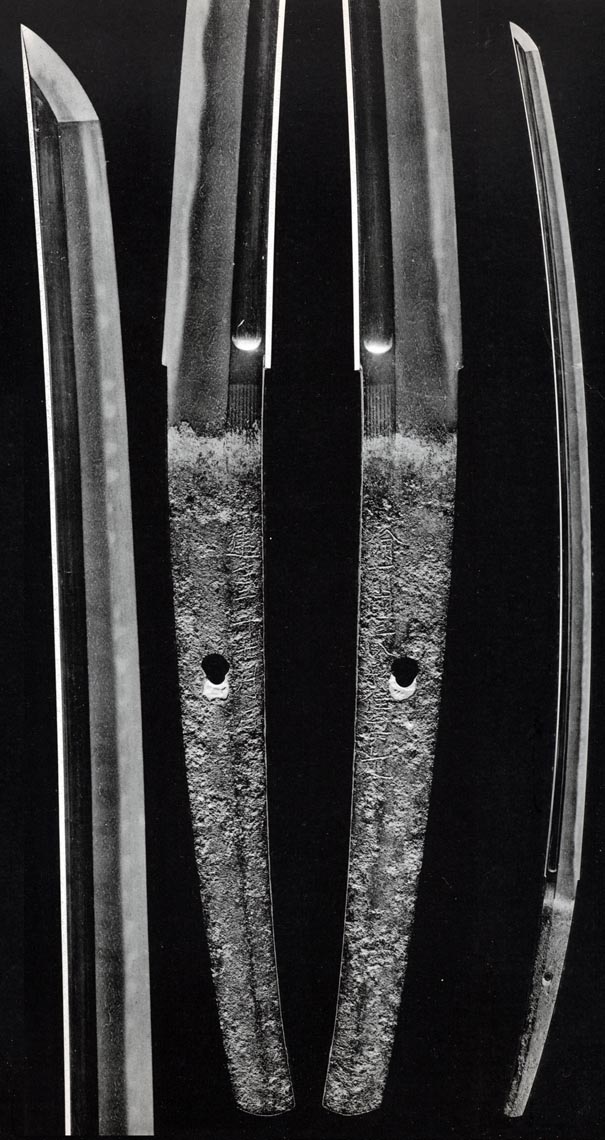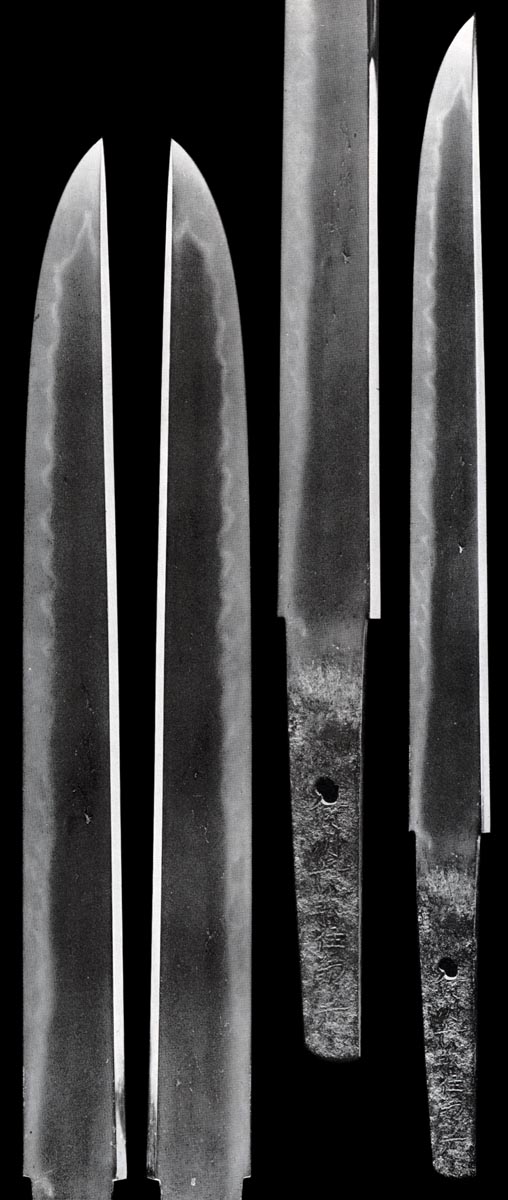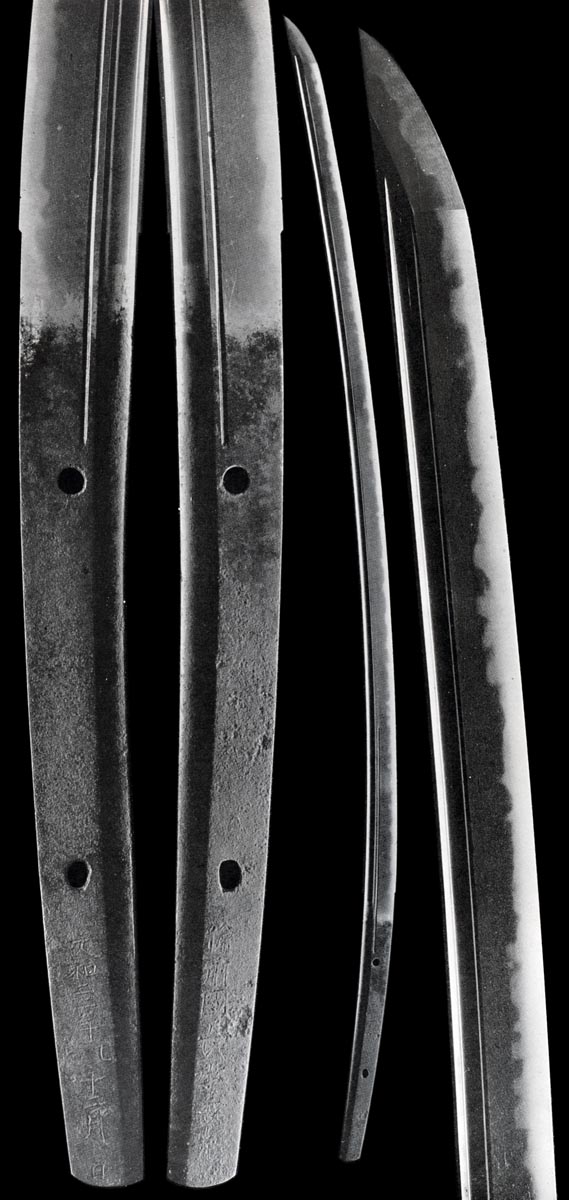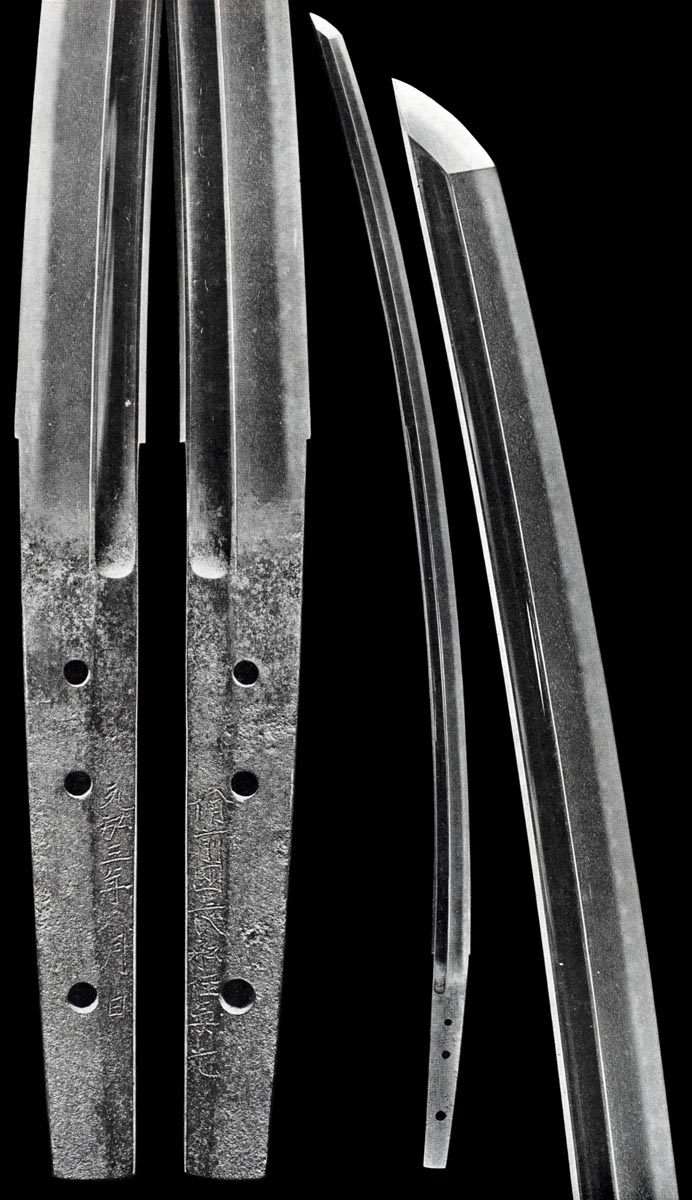| © Copyright Robert Cole 2015
- No copying or distributing BIZEN O-Kanemitsu See The Ten Students |
|
|
|
OSAFUNE KAGEMITSU * 5 Sons of KAGEMITSU * |___________________ ____________________ ___|_______ ___|_____ ____|_____ O-KANEMITSU(1) YOSHIKAGE(1) YOSHIMITSU(1) KEM-MU 1334 | KEM-MU 1334 ____________ _____________| | ______|___ ___|_____ ____|_____ | YOSHIMITSU(1) YOSHIKIYO YOSHIMITSU(2) EN-BUN 1356 | See KOZORI TEI-JI 1362 ____|____ | YUKIMITSU KO-O 1389 |_________________ ______________________________ ___________ ___|___________ ___|_____ ___|_____ | ENBUN KANEMITSU MOTOMITSU(1) EN-BUN 1356 TADAMITSU | Line follows |__________________ EN-BUN 1356 | ___|_____ _______|____ | MOTOMITSU(2) 2nd MOTOMASA | O-EI 1394 MEI-TOKU 1390 | ____________________________ ______________________ ________| ___|______ ____|____ ___|____ | SHIGEMITSU(3) TEI-JI 1362 TOMOMITSU EN-BUN 1356 MORIMOTO(1) | ___|______ _____________|______________ TEI-JI 1362 | SHIGEMITSU(4) ____|____ ____|____ ____|____ | O-EI 1394 MORIMITSU(1) MOROMITSU(1) TADAMITSU | SHI-TOKU 1384 - EI-TOKU 1381 - | _______________________________ ___________ _______________| ____|____ __________|_____ ____|____ YOSHIKAGE(2) O-AN 1368 KOZORI KUNITSUNA MASAMITSU TEI-JI 1362 | TEI-JI 1362 |__________ | ____|____ ___|____ |____________ ____________ MASAMITSU ARIMITSU ____|_____ ___|_____ ___|_____ - O-EI 1394 - YOSHIKAGE(3) YOSHIKANE MITSUKAGE KA-KEI 1387 O-EI 1394 MEI-TOKU 1390 |___________ ____|_____ ___|_____ YOSHITSUNA HISAMITSU(3) KYO-TOKU 1452 KA-KICHI 1441 See O-EI and KOZORI |
"The Ten Students" O-KANEMITSU KEM-MU (f: KAGEMITSU): He was born in KO-AN period and died at the age of 83 in the EN-BUN. The long KANEMITSU career spans over 50 years from GEN-KYO 1321 era to O-AN 1368 era, and theory has long postulated two generations. Old writings claim one long career, but the accepted chronology finds O-KANEMITSU in KEM-MU 1334, followed by EN-BUN KANEMITSU. 1st period work should be attributed to O-KANEMITSU, 2nd period work to ENBUN KANEMITSU. KANEMITSU ITAME will seem soft and is famous for YOKOME-no-KITAE, a circular spreading, and running CHIKEI. There is BOTAN "Peony" UTSURI or DAN-DAN "Spotted" UTSURI. A comparison of the YAKI-IRE or hardening shows his UTSURI master work of the first rank. O-KANEMITSU 1st Period: From GEN-KYO 1321 to KAN-O 1350. Dates of KAN-O or before will most likely be attributed to KANEMITSU(1). -SUGATA is late-KAMAKURA/early NAMBOKUCHO, graceful TACHI. -Early work: "Stooped-shoulders" KATAOCHI GUNOME pattern displays his father's influence. HAMON is small and not boisterous - KO-GUNOME MIDARE BA. A variation in height is seen. Note: Following TEI-WA 1345 we see the power of the NAMBOKUCHO sweep sword styles. Elongated point to O-KISSAKI, wide and long TACHI and wide HIRA-TSUKURI O-TANTO. NAMBOKUCHO wide TACHI is usually thin, a SOSHU influence. ENBUN KANEMITSU See ENBUN KANEMITSU School 2nd Period: Wide and powerful TACHI with elongated KISSAKI and shallow SORI. Narrow SHINOGI-JI. Look for raised SHINOGI. KANEMITSU SUGATA is generally thin. Shallow, almost vacuous NIKU. -Elongated TANTO or O-TANTO will be wide bladed, thin KASANE of shallow NIKU. SAKIZORI. -ITAME HADA with YOKOME-no-KITAE. CHIKEI and DAN-DAN UTSURI. NIE in JI & HA area. TANTO: UTSURI follows HAMON. From KAN-O 1350 forward, KANEMITSU GUNOME is KOSHI-HIRAKI style, that is: pronounced valleys separating figures. This HAMON may appear almost a NOTARE, with NIOI "Smoke" at the crests. KO-NIEDEKI where NIOI is tightly defined. The variance in height will fall and rise between HOSO and CHU width. BOSHI: MIDARE-KOMI with TOGARI or possibly a small KO-MARU. There will be a shallow KAERI. KANEMITSU BOSHI has been likened to the flame of a candle and so the phrase, ROSOKU "Candle-flame" BOSHI. MEI: BISHU OSAFUNE KANEMITSU BISHU OSAFUNE JU KANEMITSU BIZEN-no-KUNI OSAFUNE JU KANEMITSU BIZEN-no-KUNI OSAFUNE JU SAEMONnoJO FUJIWARA KANEMITSU (KAKI-HAN) O-KANEMITSU Recap: - Late-KAMAKURA/early NAMBOKUCHO SUGATA - CHIKEI and YOKOME-no-KITAE - DAN-DAN UTSURI - Resembles father, KAGEMITSU's KATAOCHI "Stooped-shoulders" KO-GUNOME MIDARE HA - HAMON is small and varies in height - Look for SAN-SAKU style BOSHI - See NAGAMITSU EN-BUN KANEMITSU: - NAMBOKUCHO SUGATA, O-TANTO - Many with HORIMONO - KOSHI-HIRAKI GUNOME HA - ROSOKU "Candle-flame" BOSHI |
O-Kanemitsu - Juyo
Bunkazai O-Kanemitsu Nagasa: 2 Shaku 1 Sun 6 Bu 3 Rin (65.45cm) Sori: 8 Bu (2.42cm) Moto-haba: 8 Bu 8 Rin (2.67cm) Saki-haba: 5 Bu 7 Rin (1.73cm) Kissaki-naga: 9 Bu 6 Rin (2.61cm) Moto-kasane: 2 Bu 3 Rin (0.7cm) saki-kasane: 1 Bu 6 Rin (0.48cm) Nakago: 6 Sun 1 Bu (18.48cm) Early work. Shinogi-tsukuri, Mitsu-mune, Beautiful Koshizori Chu-Kissaki Tachi Sugata with Bo-Hi to Maru-dome. Strongly standing, running Itame Mokume mix Hada with Ji-Nie and standing Utsuri. Ko-Nie KataOchi "Stooped Shoulders" Gunome with small Ashi. Hiro-width Midare Boshi has short Kaeri. Ubu Tachi-Nakago with one Mekugi-ana. Signed: Bizen-no-Kuni Osafune Ju Kanemitsu Kem-mu Ninen Shichi-gatsu Hi |
O-Kanemitsu
Tanto - Kokuho O-Kanemitsu Tanto - Kokuho Nagasa: 24.8cm Moto-Haba: 2.3cm Hira-Tsukuri, Ihori-Mune, wide Mihaba, Uchizori. Ko-Itame Hada has Ji-Nie and standing Utsuri. Nie-Deki Kataochi "Stooped-shoulders" Gunome Ba, after his teacher, Osafune Kagemitsu. Saagri Togari Boshi with medium Kaeri. Ubu Haagari Kurijiri Nakago has one Mekugi-ana. Bishu Osafune Ju Kanemitsu |

|
|
BUNKAZAI
FUKUSHIMA O-KANEMITSU "The Ten Students"
|
Kanemitsu
- Kokuho Kanemitsu - Kokuho Nagasa: 75.6cm Moto-Haba: 2.8cm This date is late for O-Kanemitsu. Hira-Tsukuri, Ihori-Mune, elongated O-Kissaki. Bo-Hi both sides run through the Nakago. Itame Hada has Ji-Nie and standing Midare-Utsuri. Nioi-Fukashi Gunome-Midare Ba of different height reach Hako, box-like shapes at their tops. Sunagashi tugs here and there. Billowing Midare-Komi Boshi has small Ko-Maru and medium Kaeri. Suriage Kurijiri Nakago has two Mekugi-ana. Bizen-no-Kuni Osafune Ju Kanemitsu Bunwa Yonnen Ko (x) Juni Gatsu Hi |
O-Kanemitsu
- Kokuho O-Kanemitsu - Kokuho Nagasa: 77.2cm Moto-Haba: 3cm Hira-Tsukuri, Ihori-Mune, strong to Chu-Kissaki. Bo-Hi both sides to Maru-Dome. Ko-Itame Hada has thin Ji-Nie, Chikei and standing Utsuri. Ko-Nie-Deki Gunome-Midare Ba with Ashi-iri, Kinsuji and Sunagashi. Midare-Komi Boshi with very small Ko-Maru and medium Kaeri. Suriage with slight Kurijiri Nakago has three Mekugi-ana. Bizen-no-Kuni Osafune Ju Kanemitsu Genko Sannen Hachi Gatsu Hi |
|
|